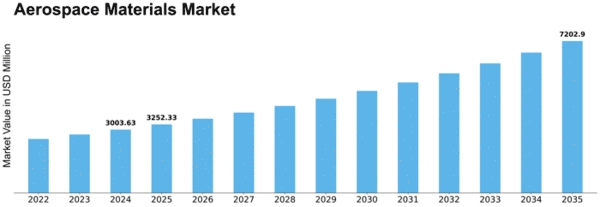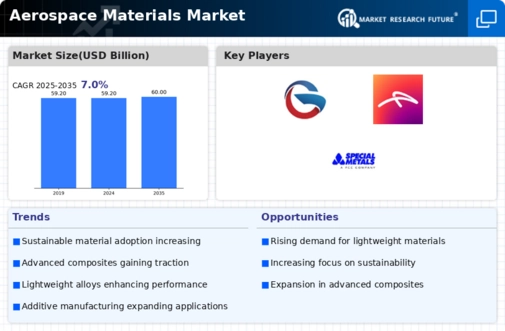Aerospace Materials Size
Aerospace Materials Market Growth Projections and Opportunities
Numerous elements that affect the aerospace industry's performance, innovation, and manufacturing have an impact on the highly specialized market for aerospace materials. An examination of the major market variables is provided below in pointer format: Technological Progress in the Design of Aircraft: Continuous improvements in aviation engineering and design are driving the need for sophisticated materials with long endurance and high strength-to-weight ratios. Advanced alloys and composite materials are examples of lightweight materials that are essential for improving overall performance and fuel efficiency. Growing Need for Aircraft: The need for additional aircraft is driven by the rising demand for air travel, which is being driven by causes like globalization and an increase in the middle class. The market for aerospace materials is directly impacted by this increase in demand as manufacturers look for materials that are efficient and inventive. Prioritize Fuel economy and Emissions Reduction: The aerospace industry has prioritized fuel economy and emissions reduction as a result of stricter environmental restrictions and a global emphasis on sustainability. As lightweight materials help save fuel, next-generation aircraft development is heavily focused on them. Innovation in Materials and R&D Expenditures: New materials for aircraft are developed through intensive materials science research and development. The development of materials with improved qualities, such as fatigue strength, corrosion resistance, and heat resistance, is facilitated by investments in research and development. Strict Regulations: To guarantee the dependability and safety of aircraft, the aerospace sector is subject to strict regulations. Adherence to these guidelines affects the choice and application of materials in the production of airplanes. Global Geopolitical issues: The aerospace materials industry may be impacted by political and geopolitical issues such as trade disputes and international cooperation. Global relations shifts could have an impact on the price and availability of raw materials needed for aircraft production. Cost and Affordability of Materials: A major contributor to the total cost of producing an airplane is the cost of aerospace materials. Manufacturers work hard to strike a compromise between the necessity for cost-effective production and the performance advantages of modern materials.



















Leave a Comment